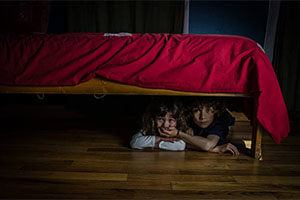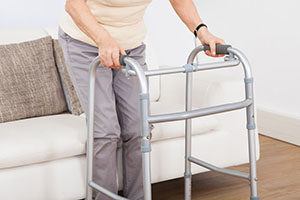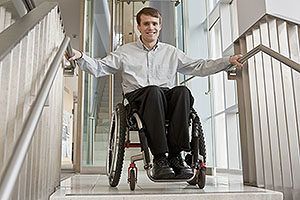
When it comes to home fire safety, some groups and individuals have a higher risk of injury or death. Most vulnerable are children under five and adults aged 65 plus, as both are twice as likely to die in a residential fire than the general population. Other high-risk groups are people with disability including reduced mobility, cognitive impairment, hearing loss or blindness.
If anyone in your home is in a high-risk group, it’s essential that your home fire escape plan includes the extra steps required to assist them in an emergency. Read on to learn some important tips to help you create a plan and prepare your home to ensure everyone gets out safely.
Children Under Five

Young children are often curious about fire, so it’s essential that you educate them about it as soon as possible to reduce the risk of them experimenting and starting fires. Keep matches and lighters in the home out of reach and teach children that they are strictly to be used by adults only.
It’s common for children to sleep through a smoke alarm, so designate someone to wake them in an emergency. When you practise your escape plan, teach your child to get out by themselves if they’re able, as you may not always be there to help. Show them two exits out of their room and explain that they should get down low and go if they are escaping through a smoke-filled room. Make sure they know the chosen meeting place once outside, how to call 000, and have memorised your home address.
Older Adults Aged 65 plus
For those over 65, reduced mobility can make it more difficult to get out quickly in the event of a fire. If possible, older adults should sleep in a ground floor bedroom, with a smoke alarm installed both inside and just outside the room. If your home is a multi-storey apartment, look for one that has automatic sprinklers installed as an additional safety measure to aid escape.
Your home fire escape plan should designate someone to help older adults get out safely if required, plus a backup in case they are not at home. If hearing loss is a concern and they are unable to hear a smoke alarm, a vibration pad may be used to wake them in the event of a fire. Check that windows and doors can be easily opened and keep a phone in the room while they sleep in case they become trapped.
People with a Disability
For people over 65, reduced mobility can make it more difficult to get out quickly in the event of a fire. If possible, older adults should sleep in a ground floor bedroom, with a smoke alarm installed both inside and just outside the room. If your home is a multi-storey apartment, look for one that has automatic sprinklers installed as an additional safety measure to aid escape.
Your home fire escape plan should designate someone to help older adults get out safely if required, plus a backup in case they are not at home. If hearing loss is a concern and they are unable to hear a smoke alarm, a vibration pad may be used to wake them in the event of a fire. Check that windows and doors can be easily opened and keep a phone in the room while they sleep in case they become trapped.
Final Word on Fire Safety for High-Risk Groups
If you live with a child under 5, an adult over 65, or someone with disability, you can greatly reduce their risk of harm in a fire with forward planning and preparation. Make your home as safe as possible by installing smoke alarms inside bedrooms, outside sleeping areas and on every floor. Ensure all rooms have two clear paths to an exit and that doors and windows are not blocked and can be easily opened.
Create a clear and easy to follow fire escape plan that includes any additional steps or measures required to get everyone out safely. And importantly, practise your escape plan twice a year so everyone is clear and confident they’ll know what to do if an emergency happens.




